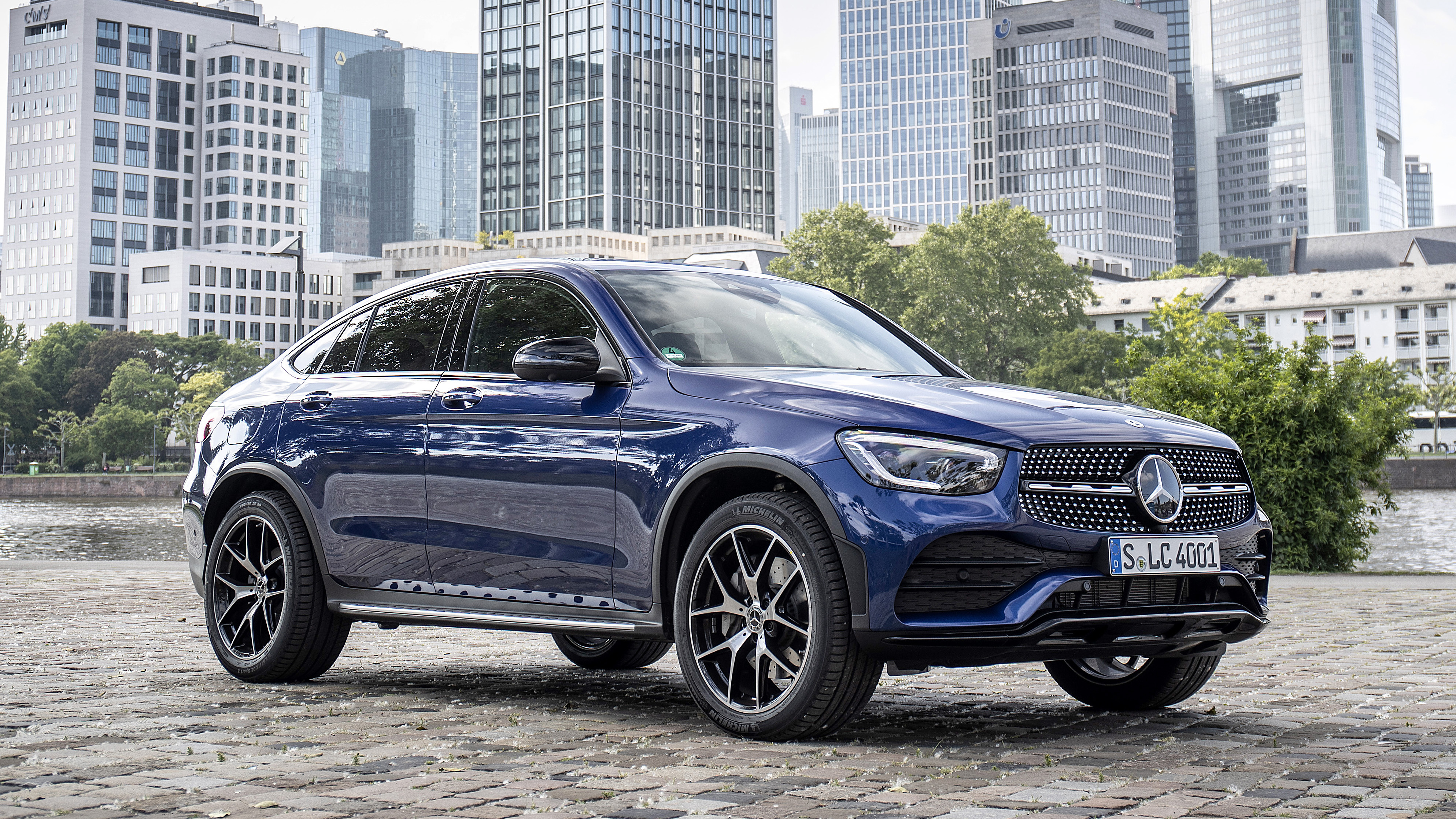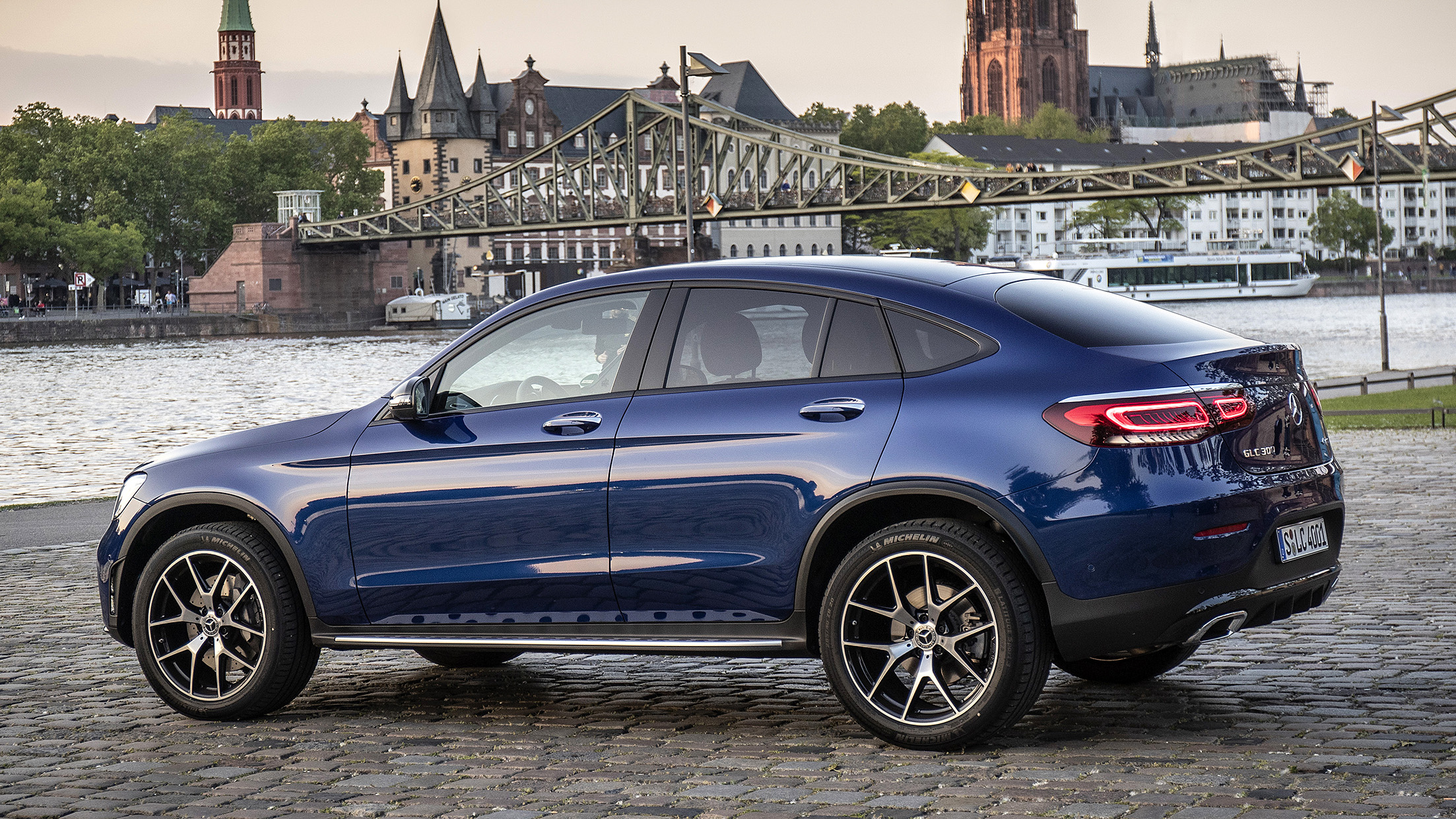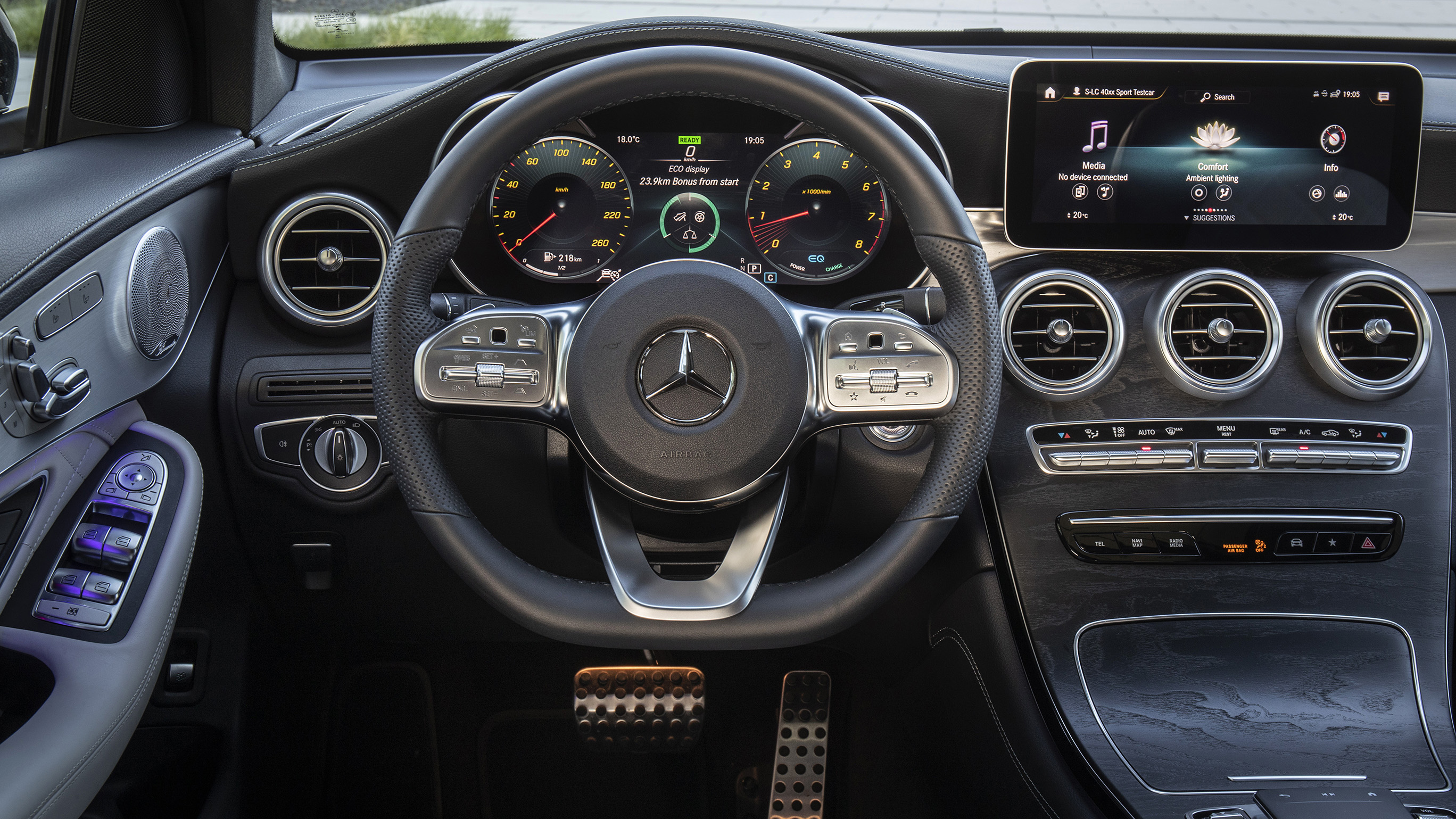
Driving
What is it like to drive?
Mercedes obviously wanted you to feel you were in a sportier machine than a standard GLC, and it’s done two things to the coupe to ram that point home.
The first is an idea stolen from many classic supercars, like the Lamborghini Diablo and Ferrari Enzo: crap rear visibility. The rear window is long but shallow, and the beltline of the rear bodywork is tall enough to lose a teenager behind. Of course, Mercedes is quick to point out that the GLC Coupe is fitted as standard with self-parking, a parking camera, parking sensors – heck, it can even find a car park for you via the nav.
And indeed, the visibility and image sharpness of the 360-degree cameras is world-class. Pin-sharp. Very well done. That’s all fine, but in the dark, or when it’s raining, on a motorway, cameras don’t help you. Sensors can be fooled. There’s a lot to be said for actually being able to see out of your car, sometimes.
The second part of the GLC Coupe’s schport makeover is to stiffen the suspension, to the point the car is needlessly jostly and noticeably less comfy than the standard GLC – then stiffen it a bit more, and garnish with 19-inch or 20-inch wheels. As a result, it’s too firm, for very little benefit to the handling. Oh, the fast and heavily-assisted steering makes for an artificially agile feel and it’s accurate in guiding the car.
But when you’re just tacking along the motorway, or bumbling through town and don’t want to be bashed over the head with marketing’s sporty brief, the GLC Coupe doesn’t settle down like, say, a Porsche Macan. Were this the standard set-up for all GLCs, it might be easier to forgive, but knowing that the other bodystyle is palpably quieter and comfier to travel in sours the impression of the Coupe on the road. Fine for Germany, but back in the UK with rough roads, you’re going to be grimacing and bearing it.
The new 220d diesel is a fine engine. It’s a 2.0-litre four-cylinder turbodiesel that replaces a much older, rattlier, generally unpleasant 2.1-litre unit, and generates 191bhp. You can get a 242bhp version of the same engine badged as a GLC 300d, but when the cheaper 220d does 0-62mph in 7.9 seconds, wants little for in-gear pace and will actually beat its claimed 40.9mpg economy score with ease in out-of-town driving, you’d rarely want for the extra poke. Also new for the facelift is a nine-speed gearbox in place of the much older seven-speeder. It’s much smoother in shifting terms, which is great, until you need to kickdown and really get a move on, when there are simply too many ratios for the computer to handle, and it hesitates, then panics. Smoothly does it.
Much as diesel torque and range suits a car like the GLC, the tide has turned so comprehensively against the black pump that petrol models may well overtake the sales of their once unsurmountable diesel counterparts. Fickle bunch, aren’t we? Anyway, if that sounds like your way of thinking then you’ll be pleased to learn that the GLC 300 is a surprisingly enjoyable package, imbuing the GLC with some schporty smarts without overawing the placid chassis.
Featured

Trending this week
- Car Review
BMW iX3






